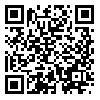جمعه 17 مرداد 1404
[Archive]
دوره 32، شماره 155 - ( 8-1403 )
جلد 32 شماره 155 صفحات 404-397 |
برگشت به فهرست نسخه ها
Ethics code: IR.ZUMS.REC.1400.458
Download citation:
BibTeX | RIS | EndNote | Medlars | ProCite | Reference Manager | RefWorks
Send citation to:



BibTeX | RIS | EndNote | Medlars | ProCite | Reference Manager | RefWorks
Send citation to:
Shafiee S, Mohammadzadeh S, Shafiee H, Dehghani Soltani A, Ahmadi F, Nourian A. The Effects of the Maxillary Splint Headgear in Comparison with Twin Block Appliance on Early Treatment of Class II Skeletal Malocclusion. J Adv Med Biomed Res 2024; 32 (155) :397-404
URL: http://journal.zums.ac.ir/article-1-7532-fa.html
URL: http://journal.zums.ac.ir/article-1-7532-fa.html
The Effects of the Maxillary Splint Headgear in Comparison with Twin Block Appliance on Early Treatment of Class II Skeletal Malocclusion. Journal of Advances in Medical and Biomedical Research. 1403; 32 (155) :397-404
چکیده: (565 مشاهده)
Background & Objective: Class II malocclusion is one of the most common types of malocclusion, and if untreated, can lead to speech and health problems, temporomandibular discomfort, trauma risk to maxillary incisors, and psychological issues. Early treatment with appliances like Maxillary splint headgear (MSH) or Twin block can, therefore, be highly impactful. The present study aimed to compare the effects of MSH and Twin block on cephalometric landmarks to make an informed decision for optimal treatment planning.
Materials & Methods: The research comprised sixteen patients treated with a maxillary headgear splint and sixteen patients treated with a Twin block, and lateral cephalometric radiographs were evaluated before and after treatment. These two groups were compared due to orthodontic parameters using an independent t-test or Mann-Whitney test.
Results: The results indicate that age and gender had no effect on the final treatment outcome. No significant differences were observed in cephalometric parameters (P>0.05) except for pre-treatment "ANB" and "Lip Competency at rest," which were higher in the MSH group (P=0.035 and 044, respectively).
Conclusion: MSH and Twin block are equally effective in treating Class II malocclusion.
Materials & Methods: The research comprised sixteen patients treated with a maxillary headgear splint and sixteen patients treated with a Twin block, and lateral cephalometric radiographs were evaluated before and after treatment. These two groups were compared due to orthodontic parameters using an independent t-test or Mann-Whitney test.
Results: The results indicate that age and gender had no effect on the final treatment outcome. No significant differences were observed in cephalometric parameters (P>0.05) except for pre-treatment "ANB" and "Lip Competency at rest," which were higher in the MSH group (P=0.035 and 044, respectively).
Conclusion: MSH and Twin block are equally effective in treating Class II malocclusion.
نوع مطالعه: مقاله پژوهشی |
موضوع مقاله:
Clinical Medicine
دریافت: 1403/4/7 | پذیرش: 1403/10/16 | انتشار: 1403/7/19
دریافت: 1403/4/7 | پذیرش: 1403/10/16 | انتشار: 1403/7/19
| بازنشر اطلاعات | |
 |
این مقاله تحت شرایط Creative Commons Attribution-NonCommercial 4.0 International License قابل بازنشر است. |


